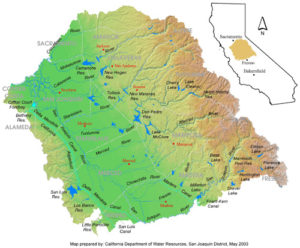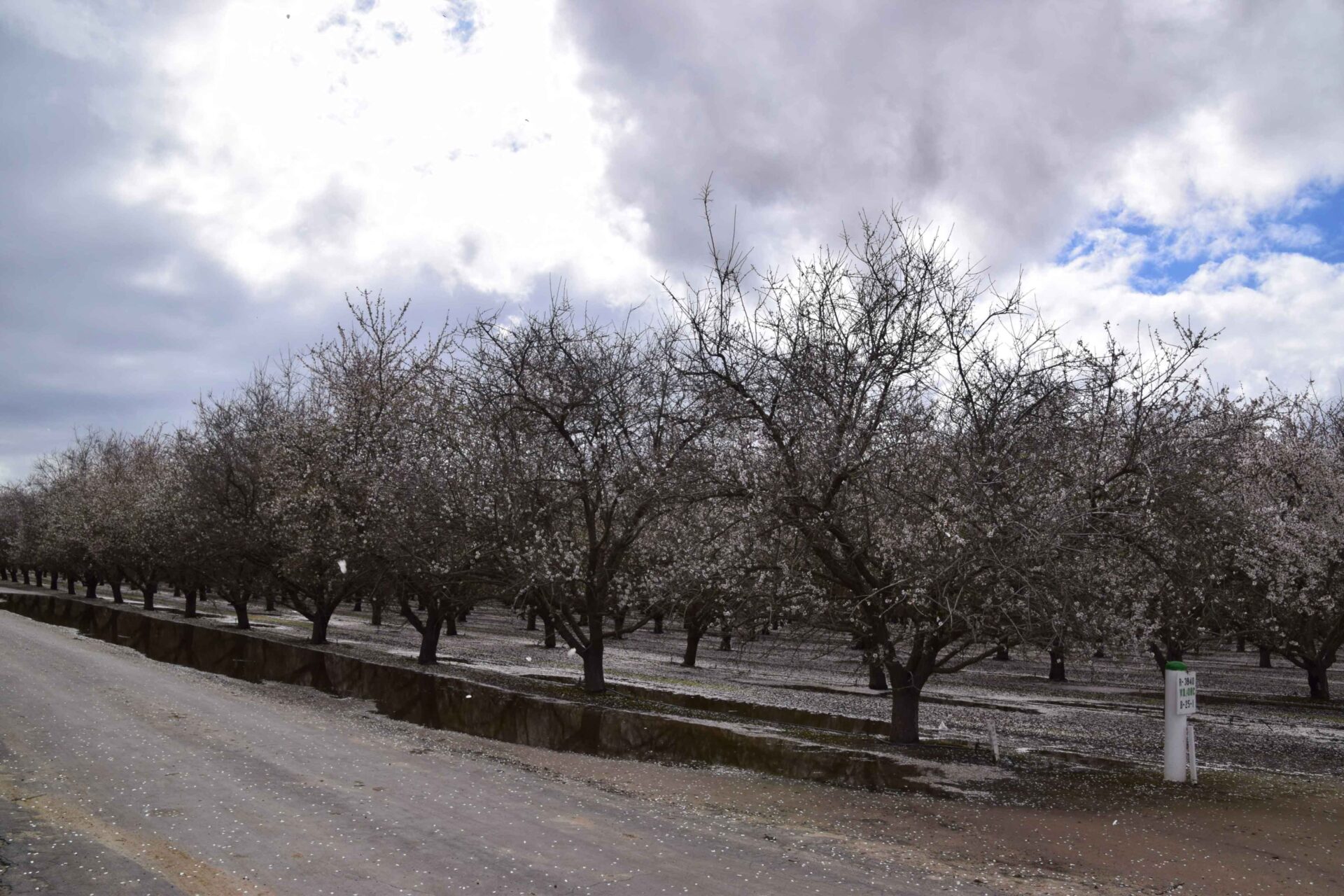The loss of water has been an ongoing battle in California for years. While Mother Nature takes her turn every now and then, nothing has impacted this state’s available water supply more than actions by the state and federal governments in taking water for “ecological, biological or environmental purposes”; in most cases as a priority above any municipal or agricultural use. For example, the imposition of the Central Valley Project Improvement Act (CVPIA) and the Endangered Species Act (ESA) related biological opinions (BiOps) for the salmon and delta smelt resulted in a loss of over 1 million acre-feet of water south of the delta. This in turn led to hundreds of thousands of acres of valuable and incredibly productive agricultural land in the western and southern portion of the valley being permanently fallowed. Now, the state is proposing significant impacts to northeast side of the San Joaquin Valley where they are proposing to restore salmon runs by increasing unimpaired water flows in the tributaries feeding the San Joaquin River.
Before we dive into the issue at hand, let’s lay the factual foundation for what is currently taking place. The State Water Resources Control Board (SWRCB) has an obligation to address ecosystem health in the San Francisco Bay and Sacramento-San Joaquin Delta Estuary, otherwise referred to as the “Bay Delta”. Accordingly, the SWRCB has filed and is recirculating a draft revised Substitute Environmental Document (SED), on the proposed updates to the Water Quality Control Plan for the Bay-Delta Plan. The proposed updates (Plan Amendment) include new and revised San Joaquin River flow objectives for the protection of fish and wildlife beneficial uses, a revised salinity water quality objective for the protection of southern Delta agricultural beneficial uses, as well as a program of implementation for those objectives. The Porter-Cologne Water Quality Control Act and the federal Clean Water Act require the State Water Board to regularly review and update the Bay-Delta Plan. The Bay-Delta Plan identifies beneficial uses of water in the Bay-Delta estuary, water quality objectives to protect those uses, and a program of implementation to achieve the water quality objectives. The proposed Plan Amendment would update the 2006 Bay-Delta Plan’s San Joaquin River flow and southern Delta salinity water quality objectives and the program of implementation for those objectives. The proposed flow objectives would require increased flows from three eastside, salmon-bearing tributaries to the San Joaquin River: the Stanislaus, Tuolumne and Merced Rivers. Therein lies the issue. Increased flows result in less diversions, and less diversions mean less water for human and agricultural uses.

In fact, at the proposed levels, it means significantly less water for cities and farms in Merced, Stanislaus and San Joaquin Counties. The plan calls for 30 to 50% unimpaired flows on the three eastside tributaries, with the initial starting point set at 40%. This proposal, if implemented, would be economically devastating. Not only would it distress cities and farmers relying upon surface water diversions from those rivers, but would severely diminish groundwater supplies as cities and farms will attempt to pump groundwater to make up the shortfall. However, when you overlay the Sustainable Groundwater Management Act (SGMA) over this scenario, you can arrive at only one conclusion. Significant farmland will be taken out of production in Merced, Stanislaus and San Joaquin Counties, and many cities will be without reliable drinking water supplies. SGMA mandates that critically over-drafted basins, including the Merced basin, have groundwater sustainability plans (GSPs) in place by January 31, 2020. Simply pumping groundwater is not an option, even by the state’s own mandates!
The state estimates by their own numbers that the plan results in a 7 to 23% reduction in water available for human consumptive use. At a 40% unimpaired flow level, 288 thousand acre-ft. will be sent down the river unavailable to human or agricultural use, and at a 50% level 485 thousand acre-ft. will be lost. How can this happen? How can this be balanced? Is this meant to address all fish concerns regardless of impacts to human and agricultural consumption? Is the state ignoring the millions of dollars that have been spent in irrigation efficiency over the past several years producing more with less water? The State must answer these questions and growers need to be sure their voice and concerns are heard. In hearings held so far literally thousands of attendees, from cities and schools to farmers and irrigation districts, have expressed their opposition to the plan. The Western Agricultural Processors Association is in the process of submitting detailed written comments in opposition to the proposed plan. The state may be listening as they have just added an additional two months to the comment deadline, which is now set for March 17th, 2017. We implore you to comment! By the way, heads up! The Sacramento River is next…

Roger A. Isom
Roger is President/CEO of the California Cotton Ginners and Growers Association and Western Tree Nut Association. He brings over 30 years of regulatory and legislative advocacy experience, specializing in environmental and safety matters. Roger’s responsibilities include the management of both Associations’ staff and day-to-day operations. Roger is also the President of the Ag Energy Consumers Association (AECA), board member and Past President of the Ag One Foundation at California State University Fresno, and manages the Navel Orangeworm Action Committee (NOWAC).
















